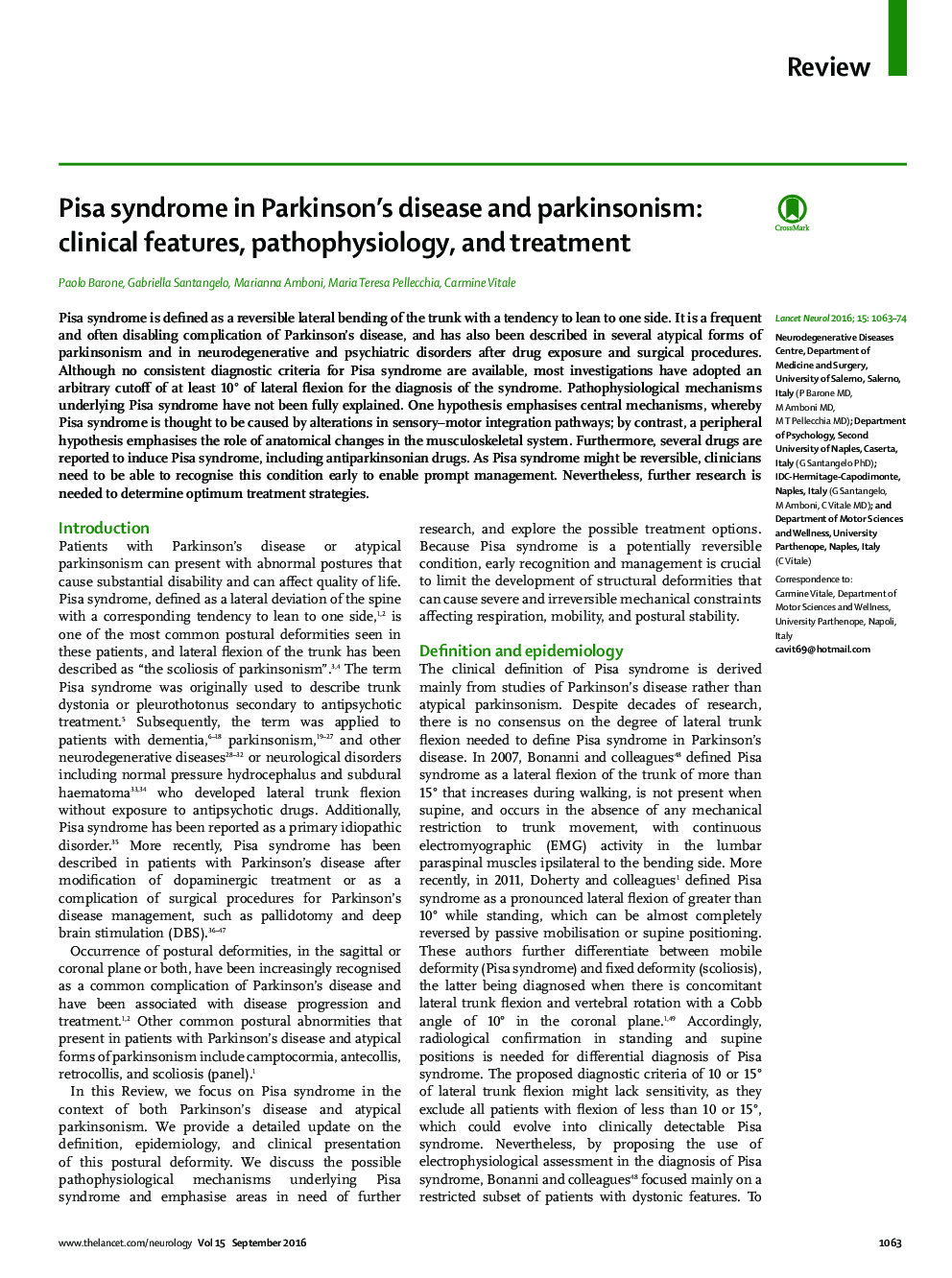| Article ID | Journal | Published Year | Pages | File Type |
|---|---|---|---|---|
| 3066248 | The Lancet Neurology | 2016 | 12 Pages |
SummaryPisa syndrome is defined as a reversible lateral bending of the trunk with a tendency to lean to one side. It is a frequent and often disabling complication of Parkinson's disease, and has also been described in several atypical forms of parkinsonism and in neurodegenerative and psychiatric disorders after drug exposure and surgical procedures. Although no consistent diagnostic criteria for Pisa syndrome are available, most investigations have adopted an arbitrary cutoff of at least 10° of lateral flexion for the diagnosis of the syndrome. Pathophysiological mechanisms underlying Pisa syndrome have not been fully explained. One hypothesis emphasises central mechanisms, whereby Pisa syndrome is thought to be caused by alterations in sensory–motor integration pathways; by contrast, a peripheral hypothesis emphasises the role of anatomical changes in the musculoskeletal system. Furthermore, several drugs are reported to induce Pisa syndrome, including antiparkinsonian drugs. As Pisa syndrome might be reversible, clinicians need to be able to recognise this condition early to enable prompt management. Nevertheless, further research is needed to determine optimum treatment strategies.
